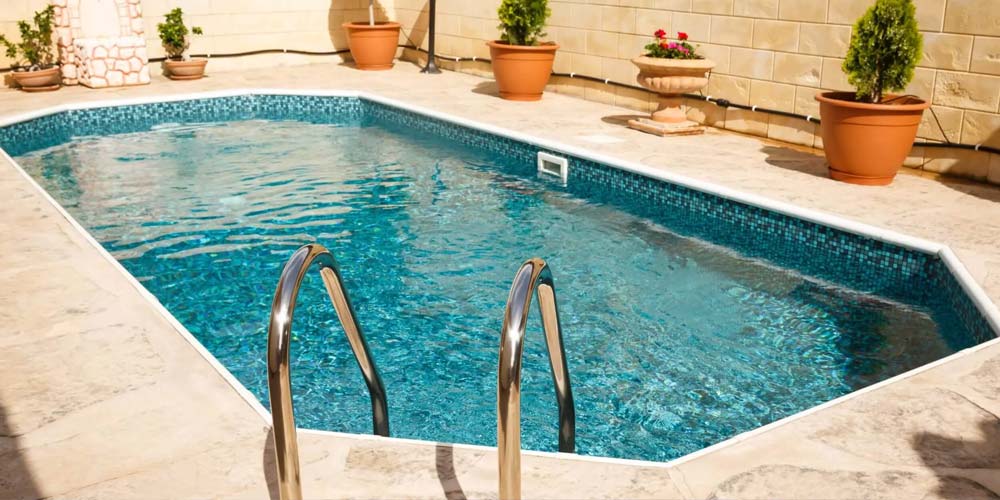Cov pH ntawm koj lub pas dej yog qhov tseem ceeb rau kev nyab xeeb ntawm pas dej. pH yog ib qho kev ntsuas ntawm cov dej acid-base balance. Yog tias pH tsis sib npaug, teeb meem tuaj yeem tshwm sim. Qhov pH ntawm dej feem ntau yog 5-9. Tus lej qis dua, qhov acidic ntau dua, thiab ntau dua tus lej, nws yog alkaline ntau dua. Pas dej pH yog qhov chaw hauv nruab nrab-pas cov kws tshaj lij pom zoo pH ntawm 7.2 thiab 7.8 rau kev ua haujlwm zoo thiab cov dej huv tshaj plaws.
pH siab heev
Thaum pH siab tshaj 7.8, cov dej suav tias yog alkaline dhau lawm. Cov pH siab dua yuav txo tau cov tshuaj chlorine hauv koj lub pas dej ua ke, ua rau nws tsis zoo rau kev tua kab mob. Qhov no tuaj yeem ua rau muaj teeb meem kev noj qab haus huv ntawm daim tawv nqaij rau cov neeg ua luam dej, huab cua hauv pas dej ua ke, thiab ntsuas cov khoom siv hauv pas dej.
Yuav txo qis pH li cas
Ua ntej, sim cov dej tag nrho alkalinity nrog rau pH. NtxivpH Minus rau dej. Qhov tseeb ntawm pH Minus nyob ntawm tus nqi ntawm cov dej hauv lub pas dej thiab pH tam sim no. Lub pH reducer feem ntau tuaj nrog cov lus qhia uas siv rau hauv ntau yam sib txawv thiab suav cov nqi tsim nyog ntawm pH reducer ntxiv rau lub pas dej.
pH Tsawg heev
Thaum pH qis dhau, cov dej hauv pas dej yog acidic. Cov dej acidic yog corrosive.
1. Cov neeg ua luam dej yuav hnov qhov cuam tshuam tam sim ntawd vim tias cov dej yuav ua rau lawv lub qhov muag thiab qhov ntswg thiab qhuav tawm ntawm lawv cov tawv nqaij thiab plaub hau, ua rau khaus.
2. Cov dej pH qis yuav ua rau cov hlau tsis zoo thiab cov khoom siv hauv pas dej ua ke xws li cov ntaiv, cov hlua, cov khoom siv teeb pom kev zoo, thiab cov hlau hauv cov twj tso kua mis, cov ntxaij lim dej, lossis cov twj tso kua mis.
3. Tsawg pH dej tuaj yeem ua rau corrosion thiab deterioration ntawm plaster, grout, pob zeb, pob zeb, thiab pobzeb. Txhua qhov chaw vinyl tseem yuav ua rau nkig, ua rau muaj kev pheej hmoo ntawm cov kab nrib pleb thiab kua muag. Tag nrho cov txheej txheem no yuav raug muab tso rau hauv lub pas dej da dej; qhov no tuaj yeem ua rau cov dej hauv pas dej ua qias neeg thiab huab cua.
4. Nyob rau hauv ib puag ncig acidic, cov tshuaj dawb chlorine hauv dej yuav poob sai. Qhov no yuav ua rau muaj kev hloov pauv sai ntawm cov tshuaj chlorine, uas yuav ua rau muaj kab mob thiab algae loj hlob.
Yuav ua li cas nce tus nqi pH
Raws li nrog txo tus nqi pH, ntsuas pH thiab tag nrho alkalinity ua ntej. Tom qab ntawd ua raws li cov lus qhia ua haujlwm ntxivPas dej pH Plus. Kom txog thaum lub pas dej ua ke pH nyob rau hauv 7.2-7.8 ntau.
Nco tseg: Tom qab kho tus nqi pH, nco ntsoov kho tag nrho cov alkalinity kom nyob rau hauv qhov qub (60-180ppm).
Hauv cov ntsiab lus yooj yim, yog tias cov dej hauv pas dej yog acidic heev, nws yuav ua rau cov khoom siv hauv pas dej corrode, corrode deg cov ntaub ntawv, thiab ua rau cov neeg ua luam dej tawv nqaij, qhov muag, thiab qhov ntswg. Yog hais tias lub pas dej da dej yog alkaline heev, nws yuav ua rau scaling ntawm lub pas dej da dej thiab cov khoom siv kav dej, ua rau cov dej hauv pas dej ua rau huab cua. Tsis tas li ntawd, ob qho tib si acidity siab thiab alkalinity siab yuav hloov cov tshuaj chlorine, uas yuav cuam tshuam rau lub pas dej da dej cov txheej txheem tshuaj tua kab mob.
Ua kom zoo sib npaug ntawmtshuaj nyob rau hauv lub pas dej ua keyog tus txheej txheem tsis tu ncua. Txhua yam khoom tshiab uas nkag mus rau hauv lub pas dej (xws li cov khib nyiab, tshuaj pleev ib ce, thiab lwm yam) yuav cuam tshuam rau dej chemistry. Ntxiv nrog rau pH, nws tseem ceeb heev los saib xyuas tag nrho alkalinity, calcium hardness, thiab tag nrho cov yaj yaj. Nrog rau cov khoom lag luam tsim nyog thiab kev soj ntsuam tsis tu ncua, kev tswj xyuas cov dej sib npaug ntawm cov dej ua kom muaj txiaj ntsig thiab cov txheej txheem yooj yim.
Post lub sij hawm: Lub Xya hli ntuj-12-2024


